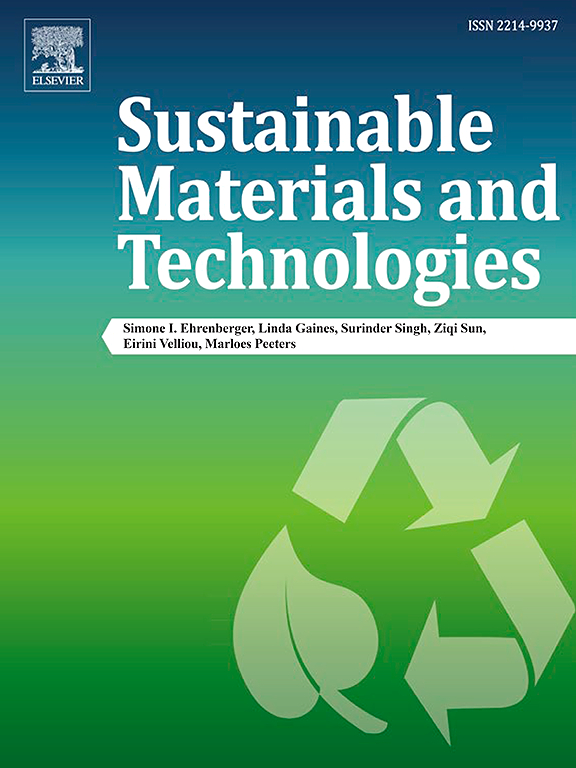Adaptable self-powered humidity sensor based on a highly permeable, hierarchically fibrous, and chaotically textured sustainable biowaste
IF 8.6
2区 工程技术
Q1 ENERGY & FUELS
引用次数: 0
Abstract
Growing global challenges related to the environmental damage caused by E-wastes could be solved by using sustainable materials with desired electronic properties. This study successfully showed the development of two different electronic devices including a resistive humidity sensor (RHS) and a triboelectric nanogenerator (TENG) by using edible almond seed skin (EASS) biowaste. EASS was preferred due to its biocompatibility, efficient charge transfer, abundant active sites, high permeability, hierarchically fibrous, and chaotically textured surface. Both electronic devices (EASS-RHS and EASS-TENG) were integrated together to develop a self-powered humidity sensor (SPHS). We determined the effect of device size, load resistance, and operating frequency on the overall performance of EASS-TENG. Obtained results of EASS-TENG showed a high stability for more than 500 cycles and other promising experimental results included a maximum open-circuit peak voltage of 60 V, short-circuit current of 3.4 μA, and a maximum instantaneous power of 36.1 μW at a load resistance of 10 MΩ. The integrated humidity sensing system of EASS-SPHS also successfully displayed varying output voltage (4–42 V) with correspondingly varying relative humidity (%RH) levels (29–100 %RH). Our developed EASS-SPHS showed a fast response time of 21 s and an even faster recovery time of only 14 s with high stability. Our EASS-SPHS was a flexible and portable device whose wireless data transmission was ensured in real time by using ESP8266 Wi-Fi module. EASS-SPHS was effectively implemented in multiple applications such as smart home automation switches, energy storage (0.1 μF to 10 μF), and powering microelectronic devices (LEDs).

求助全文
约1分钟内获得全文
求助全文
来源期刊

Sustainable Materials and Technologies
Energy-Renewable Energy, Sustainability and the Environment
CiteScore
13.40
自引率
4.20%
发文量
158
审稿时长
45 days
期刊介绍:
Sustainable Materials and Technologies (SM&T), an international, cross-disciplinary, fully open access journal published by Elsevier, focuses on original full-length research articles and reviews. It covers applied or fundamental science of nano-, micro-, meso-, and macro-scale aspects of materials and technologies for sustainable development. SM&T gives special attention to contributions that bridge the knowledge gap between materials and system designs.
 求助内容:
求助内容: 应助结果提醒方式:
应助结果提醒方式:


